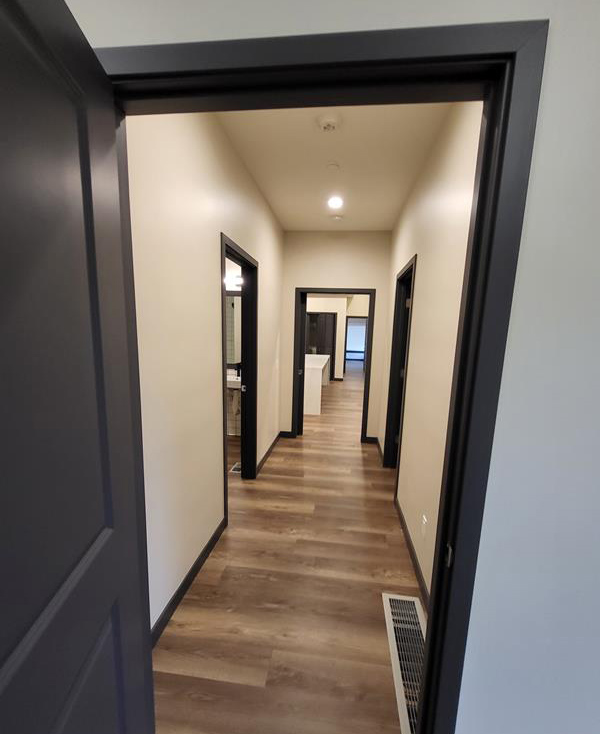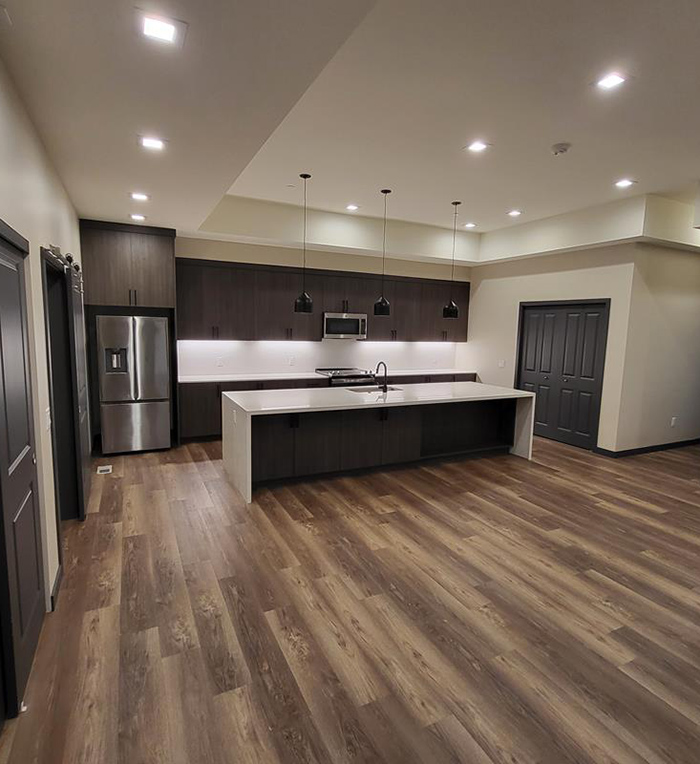
Commercial Tenant Improvement
Commercial Tenant Improvement


Tenant Improvements
Tenant improvements (TI) are more than just a facelift for commercial properties. They’re tailored changes landlords make to fit specific business needs, enhancing the value of their real estate investments.
A typical example is adding partitions or rooms to maximize rental space in an office building, making it adaptable for various businesses. But tenant improvements aren’t confined to four walls.
The parking lot can also be improved, creating ample room and convenient customer access. Let’s not forget about electrical work – updating outdated systems or installing specific lighting based on tenant requests dramatically enhances usability and safety.
Retail spaces may need unique fixtures installed to showcase products effectively. At the same time, the leased property might benefit from drop ceilings that hide unsightly cables yet provide easy access when maintenance is required.
The Process Behind Tenant Improvements
You’ve inked the agreement, and it’s time to make your business area into a place that feels like home. The tenant improvement process is a crucial part of setting up shop. It involves a series of steps to transform the rental space into an environment tailored to your business needs.
Roles and Responsibilities in Tenant Improvements
Tenant improvements work as a collaborative effort between tenants and property owners. Realizing who does what is critical to achieving any collaboration.
The building owner is usually responsible for providing funds for these alterations via a tenant improvement allowance (TIA). This sum can vary greatly depending on market conditions, lease length, rent cost, business history, and timeline agreement type.
On the other hand, the tenant plays an active role by providing design specifications for their ideal workspace layout. Every detail counts, whether choosing specific lighting fixtures or selecting suitable procedure tables.


Maximizing Tenant Improvements for Building Owners
Tenant improvements (TI) are not just about creating an attractive space. They’re a strategic tool to entice potential tenants, increase the property value, and maximize your return on investment.
Attracting Tenants through Appealing TI’s
An appealing tenant improvement can make all the difference in standing out from other commercial spaces. It allows prospective tenants to visualize their business operations within your space more efficiently. However, these enhancements must align with market trends and demands while balancing costs.
Adding specific lighting fixtures or renovating parking lots might seem like minor changes, but they can significantly improve a property’s appeal. Think of this as dressing up your building to its best advantage – you want to put on a show.
Balancing TIA with Overall Lease Market Conditions
The tenant improvement allowance (TIA), part of lease agreements, provides funding for these upgrades.
It would be best to consider overall lease market conditions when setting TIA amounts because too generous allowances could result in less profit. In contrast, low ones may turn off potential renters.
To find balance here means considering factors such as local rental rates per square foot, general contractor prices, and the average cost of typical improvements based on current estate news updates.
Calculating ROI for Tenant Improvements
Finding the sweet spot between what you spend on TI’s versus how much added value they bring requires careful calculations.
The particulars of this computation will differ depending upon multiple components, including the property area, the size of the leased space, and the kind of operation to be conducted within it.
Remember, a well-calculated TI can lead to higher rent prices and longer lease terms.
When Tenant Improvements Exceed Allowance
In construction terminology, change orders are modifications made after the initial contract is agreed upon. These might include alterations due to unexpected issues uncovered during renovations or additions requested by tenants.
If you’re faced with tenant improvements exceeding allowance, these change orders could become your new best friend. They provide flexibility within fixed contracts and allow for renegotiations when unforeseen circumstances arise – much like those extra chocolate bars at checkout.
Negotiating additional funds can feel intimidating, but remember: everything is negotiable in real estate leases. If specific tenant-specific enhancements have pushed costs above budget, discuss splitting these expenses with the landlord. It’s not uncommon for landlords to agree on higher monthly lease payments instead of paying upfront costs.
However, if there’s no room left for negotiation (or perhaps more appropriately—renovation), consider alternative solutions such as removing less essential improvements from plans or opting for cheaper materials where possible.
Beyond negotiating additional funding or making cutbacks, exploring creative alternatives can also help manage situations when TI’s exceed allowances without compromising quality too heavily.
A few possibilities could involve:
- Rethinking design strategies — Maybe specific lighting could be replaced with a more cost-effective option or fancy office carpeting swapped for durable laminate flooring.
- Lease term adjustment — Extending the lease agreement can help distribute costs over a longer period, making it more manageable from both tenant and landlord perspectives.
- Scouting for local subsidies — There are towns and cities out there that incentivize businesses. They want you to renovate in specific areas or industries. These perks could be the final push your project needs.
Commercial Tenant Improvements…
It is not just about creating appealing spaces. They’re strategic business moves that increase property value and attract potential tenants.
These improvements can range from minor changes like a painting to significant overhauls such as adding partitions or modifying parking lots. It’s all tailored to meet specific tenant needs.
Negotiating the tenant improvement allowance in lease agreements is a critical part of this process. The art lies in balancing the allowance with overall market conditions and budget constraints.
When costs exceed allowances, change orders come into play. These help manage situations effectively without disrupting your financial plan too much.
Remember: Commercial Tenant Improvements aren’t an expense; they’re investments toward enhancing your commercial space’s appeal and boosting its ROI significantly!
Mt Hood Restoration is an expert in commercial building restoration and tenant improvements. Call us today for a free estimate.


